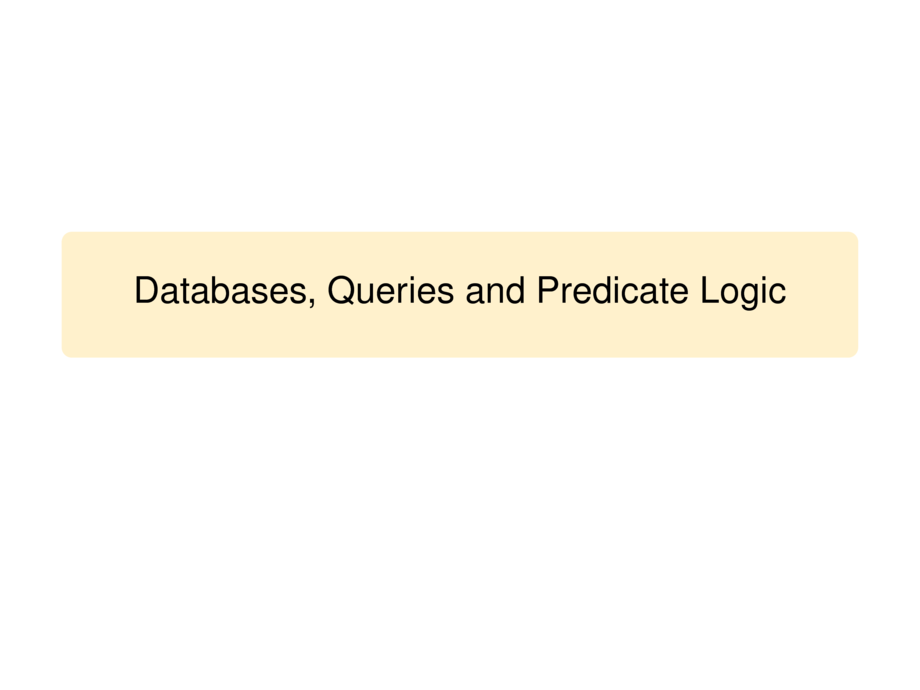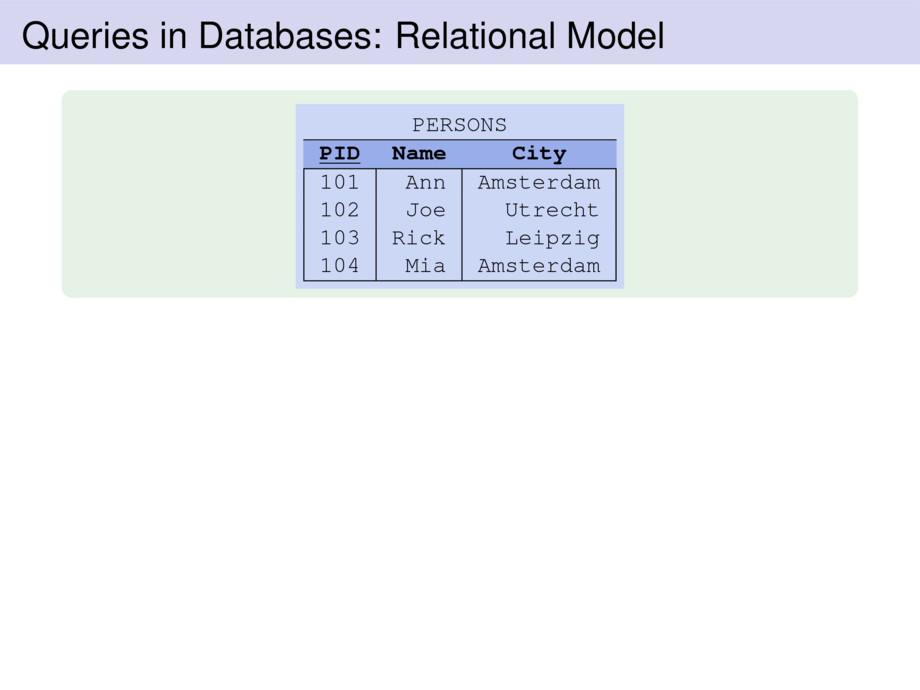



































































































3/70
\begin{frame}
\frametitle{Queries in Databases: Relational Model}
\begin{exampleblock}{}
\begin{center}
\tablepersons
\end{center}
\end{exampleblock}
\smallskip
\pause
\begin{goal}{Relational Model}
The table is modelled by a ternary predicate \textit{Person}:
\begin{talign}
\text{\textit{Person}(101, Ann, Amsterdam)}
\end{talign}
Likewise, the predicate holds for every row of the table.
\end{goal}
\pause
We can formulate \emph{queries using free variables}.
\begin{exampleblock}{}
The names of people living in Amsterdam:
\pause
\begin{talign}
\{\; y \;\mid\; \myex{i}{\text{\textit{Person}}(i,y,\text{Amsterdam})} \; \}
\mpause[1]{ \;\;=\;\; \{\;\text{Ann},\; \text{Mia}\;\} }
\end{talign}
\end{exampleblock}
\end{frame}

